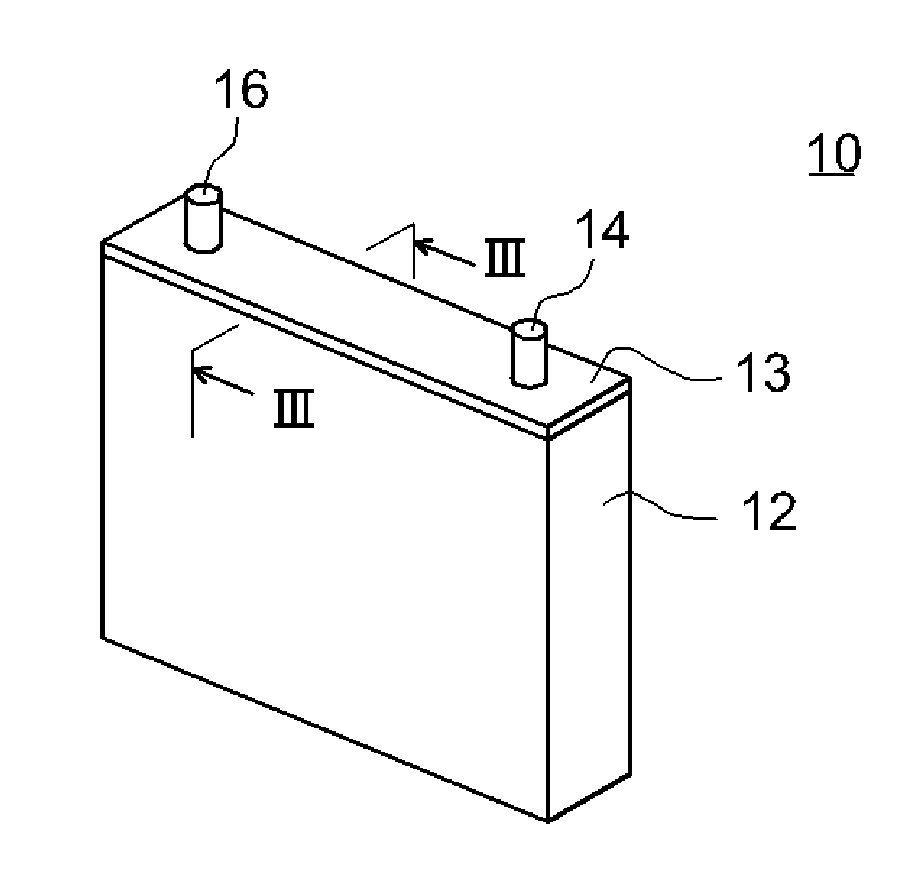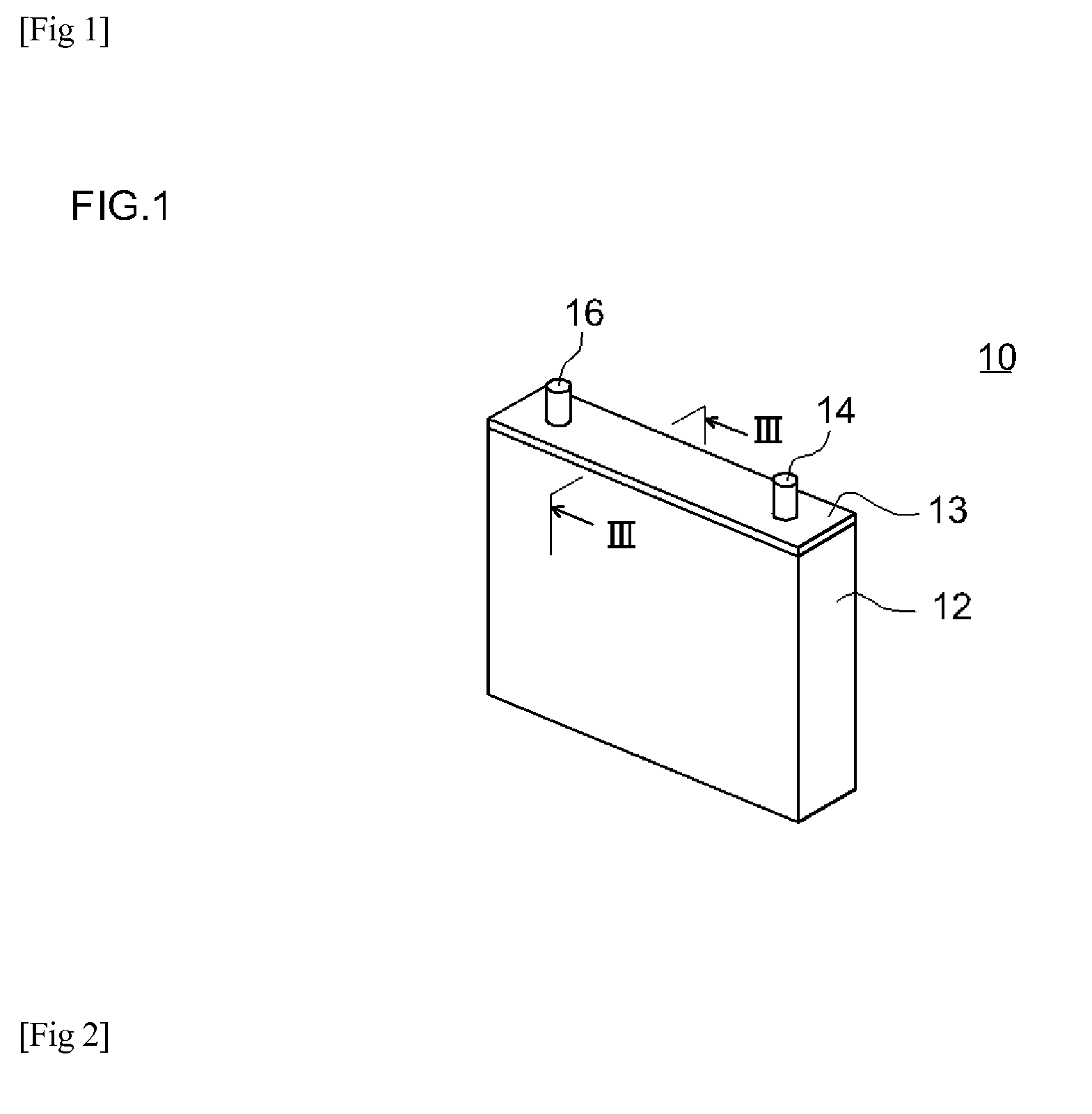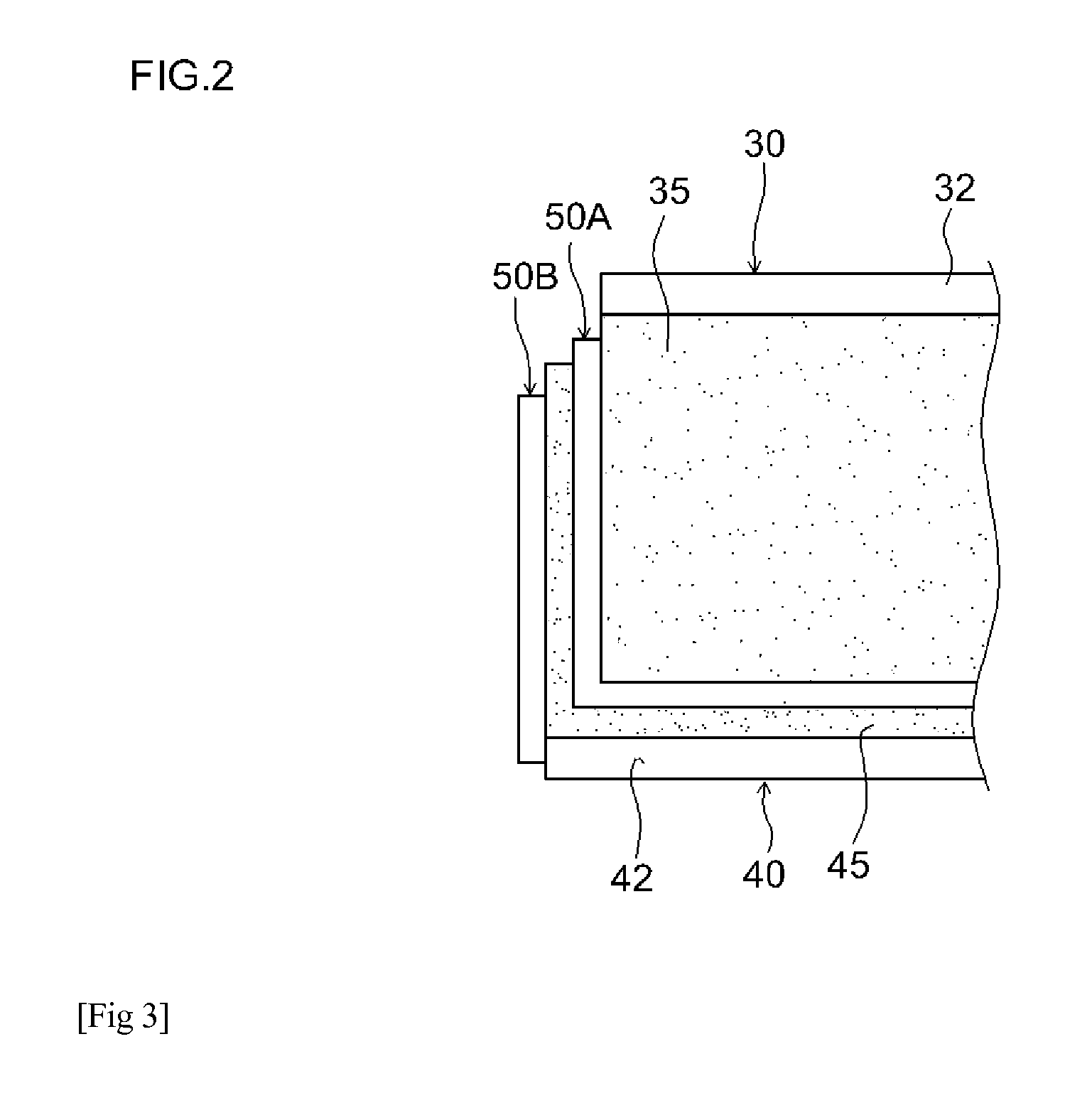Non-aqueous electrolyte type lithium ion secondary cell
- Summary
- Abstract
- Description
- Claims
- Application Information
AI Technical Summary
Benefits of technology
Problems solved by technology
Method used
Image
Examples
example 1
[0071][Preparation of Cell Member]
[0072]As a positive electrode mixture, a positive electrode active material, carbon black (CB) as a conductive material, and PVDF as a binder were mixed with N-methyl-2-pyrrolidone (NMP) so that the mass ratio of the materials was 85:10:5, and so that the solid content concentration (NV) was roughly 50 mass %. As a result, a slurry-like composition was prepared.
[0073]Herein, as a positive electrode active material, there was used a powder-like lithium-manganese oxide (LiMn2O4) with an average particle diameter of 7 μm, a specific surface area of 1 m2 / g, and a theoretical discharge capacity of about 90 mA / g. The oxide has a spinel type crystal structure. Further, as the CB, acetylene black (AB) was used.
[0074]The positive electrode mixture was coated and dried on both the sides of long aluminum foil (positive electrode collector) with a thickness of about 15 μm. The coating amount (in terms of NV) of the positive electrode mixture was adjusted so as ...
example 2
[0086]A positive electrode sheet, a negative electrode sheet, an initial electrolyte, and separators were prepared in the same manner as in Example 1. The total content of moisture which can be mixed into a cell was quantified, and was found to be 0.00084 mol. In the present example, to the initial electrolyte, was added LiBOB in an amount of 0.00090 mol (0.174 g), thereby to prepare a final electrolyte.
[0087]Using the members, a cell was formed, and an initial charging treatment was performed in the same manner as in Example 1. As a result, the cell in accordance with Example 2 was obtained.
example 3
[0088]A positive electrode sheet, a negative electrode sheet, an initial electrolyte, and separators were prepared in the same manner as in Example 1. The total moisture content was quantified, and was found to be 0.00117 mol. In the present example, to the initial electrolyte, was added LiBOB in an amount of 0.00196 mol (0.380 g), thereby to prepare a final electrolyte.
[0089]Using the members, a cell was formed, and an initial charging treatment was performed in the same manner as in Example 1. As a result, the cell in accordance with Example 3 was obtained.
PUM
| Property | Measurement | Unit |
|---|---|---|
| Temperature | aaaaa | aaaaa |
| Content | aaaaa | aaaaa |
Abstract
Description
Claims
Application Information
 Login to View More
Login to View More - R&D
- Intellectual Property
- Life Sciences
- Materials
- Tech Scout
- Unparalleled Data Quality
- Higher Quality Content
- 60% Fewer Hallucinations
Browse by: Latest US Patents, China's latest patents, Technical Efficacy Thesaurus, Application Domain, Technology Topic, Popular Technical Reports.
© 2025 PatSnap. All rights reserved.Legal|Privacy policy|Modern Slavery Act Transparency Statement|Sitemap|About US| Contact US: help@patsnap.com



